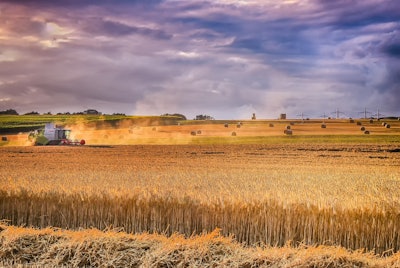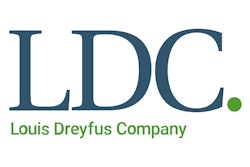
The U.S. economy still has considerable momentum and is not currently on the verge of recession.
Economists have never been more pessimistic, however, and there arevery legitimate reasons for concern.
Over the past half century, inflation above 5% has never been tamed without incurring a recession. That portends a painful yet necessary chain of events will unfold in 2023, according to a comprehensiveyear-ahead outlook reportfromCoBank’s Knowledge Exchange.
“As financial conditions continue to tighten, we expect the U.S. economy will steadily soften through the first half of 2023, ushering in a brief, modest recession,” saidDan Kowalski, vice president of CoBank’s Knowledge Exchange.
“The unemployment rate could rise as high as 5%, indirectly leading to a decline in consumer spending. Without this softening in the labor market and the associated slowing of wage gains and spending, it will be difficult to stabilize prices.”
CoBank 2023展望报告调查了几个客y factors that will shape agriculture and market sectors that serve rural communities throughout the U.S.
Global Economy: No escaping this slowdown
After two years defined by a strong economic rebound from the pandemic, the global economy will sputter in 2023. A persistent energy crisis in Europe, China’s messy exit from zero-COVID and higher interest rates globally will reduce world economic growth to a crawl.
Europe, likely already in recession, will muddle through the winter with sufficient energy supplies. China, much less impacted by Russia’s invasion of Ukraine, will continue to struggle with the impacts of COVID. Greater Asia will be negatively impacted by sliding global demand for goods. Emerging markets will keep the global economy growing in 2023 as advanced economies collectively will be stagnant and could even shrink.
U.S. Economy: Some pain is necessary
Thelabor marketremains very tight, consumers are still spending aggressively, and corporate profit margins have hit record levels despite high inflation. If a recession is coming, it will take several months for these factors to reverse course, delaying any potential recession until at least Q2 2023.
Even then, it is unclear how readily businesses would lay off workers after experiencing such extreme staffing challenges over the past two years. The structural loss of more than 2 million workers since 2020 is contributing to higher inflation for both goods and services. However, the void that their exit has left could also cushion the economy from the worst of a downturn in 2023.
Monetary Policy: More tough decisions ahead
The Federal Reserve’s job will not get any easier in 2023. In nine months, the Fed has raised its federal funds rate from zero to more than 4%.
Now, as some economists argue that inflation is falling and the Fed has done enough, Chair Powell and the Federal Open Market Committee will make even tougher decisions about when to halt rate increases. The trickiest aspect of the Fed’s inflation fight is that there is no playbook or rule of thumb to tell the Fed when to pause rate hikes.
The Fed’s preferred inflation measure, the personal consumption expenditures index, has fallen from its peak of 7% to 6%. That’s still much too high for the Fed’s comfort and Chair Powell has said that there is greater risk in stopping too early than raising rates for too long.
U.S. Government: Unique midterm results muddy Farm Bill’s path
The 118th Congress will convene in January marking the official beginning of the Farm Bill reauthorization effort. With a September 30 sunset for the current Farm Bill, Congress will have just nine months to complete the enormous task of passing the next bill.
As the reauthorization gets underway, a number of themes are anticipated. They differ significantly, however, by party. Some interest groups are lined up to address consolidation in farming and agribusiness. Other groups will push policies to direct more resources to small and beginning producers. Ultimately, the Senate will have the upper hand in this debate and the policies that arise in the bill will impact agriculture for the next decade to come.
Grain, Farm Supply & Biofuels: Momentum builds for biofuels
Grain elevators and merchandisers face a mixed picture for the year ahead.
The good news for U.S. farmers is that global grain and oilseed supplies are exceedingly tight. Ukrainian grain production and exports are still below average, providing underlying support for grain prices.
Ag retailers begin 2023 on strong financial footing but face several challenges.
Labor shortages and rising wages will negatively impact margins. Wholesale fertilizer costs will rise during the first half of 2023 as cooperatives absorb higher barge and rail costs and compete with export markets for limited supply.
The outlook for biofuels is very strong,supported by positive policyand demand tailwinds from 2022. Ethanol will benefit from greater usage of E15 and growing demand for corn oil.
U.S. Agricultural Economy: Farm margins will tighten
Despite the global pandemic and a steady barrage of disruptive challenges, the U.S. agricultural economy has fared quite well for the last three years. In 2023, however, producers and related industries will begin to show financial strains.
A relentless series of adversities including skyrocketing production costs, steeply higher interest rates and weakening demand will increasingly pressure farm income and margins.
The ongoing drought and increasing political tensions with China — the U.S.’s largest agricultural export market — present additional downside risk. China has made it clear that it would like to minimize its dependence on imports of U.S. agricultural products, adopting a “buy only if we have to” attitude.
Animal Protein: Production to moderate despite a tailwind of enthusiasm
Most U.S. animal protein industry segments have posted phenomenal financial performance over the past three years. This era of broad profitability, however, will likely come to an end in 2023.
The high costs of feed, labor and construction support the prevailing cautionary attitude toward expanding animal production.
在加入气候不确定性、环境、社会和治理压力creasing energy costs, and it’s likely that 2023 will be a year when major market participants pause, reflect and consolidate. On the demand side, consumers are reeling from rapidly declining real wages, a trend that’s likely to continue well into 2023.
Dairy: Milk supplies to gradually grow as demand base shifts
After a year of stronger profits that allowed producers to pay down debt, dairy producer margins will come under pressure in 2023.
Despite record-high milk prices earlier in 2022, herd expansion has been minimal among the major exporting countries and this trend is expected to continue in 2023.
Dairy product prices will eventually moderate in response to the gradual growth in global milk supplies. Meanwhile, economic weakness and resurging COVID infections in China, the top dairy-importing country, threaten to destabilize global dairy demand.
Domestic demand for U.S. dairy products, particularly higher-priced brands, will face headwinds as consumers trim grocery spending.
Specialty Crops: Drought, labor shortages, strong U.S. dollar among headwinds
Specialty crop growers and processors face a multitude of headwinds in 2023. Costs of water, labor, fertilizer and other inputs are rising while a strong U.S. dollar and weakening global economy drag on the U.S.’s ability to sell products abroad.
California in particular faces worsening conditions with the highest diesel prices and farm wages in the U.S. amidst a worsening drought. The drought has lifted the price of water to record highs asLa Niña conditions persist into a third straight year.
Tight labor availability will require growers to lean harder on H-2A workers or adopt more automation in the field. Despite the headwinds, growers and processors will benefit from falling costs of shipping containers and fewer delays at ocean ports.
Rural Electricity: Time to look beyond yesterday’s energy crisis playbook
The global oil shocks of the 1970s had a profound and wide-ranging impact on energy use, and today’s energy crisis foreshadows a similar response. The collective response to the 1970s crisis led to innovative policy measures, paving the way for greater energy security. These measures largely included dramatic conservation and fuel diversity but also funded moonshot projects for renewable development.
Surging energy prices, caused in large part by the Russian invasion of Ukraine, are yielding similar levels of policy intervention today. And the initial seed investments made a half-century earlier are opening doors to greater opportunities for market substitution.
Rural Communications: Crosscurrents set the stage for the rural communications market
The rural communications market is heading into 2023 with numerous crosscurrents. Theincreasing importance of broadbandhelps insulate the industry against economic weaknesses. New headwinds, however, are emerging from a weakening economy, tightening capital markets and aggressive network build activity across a wide range of market actors.
The biggest risk to network builds in 2023 will be the tight labor market and ongoing supply chain issues. This is of particular concern for smaller broadband operators who are competing against the larger national telecommunications companies for resources.
Read the full report, The Year Ahead: Forces That Will Shape the U.S. Rural Economy in 2023.





















